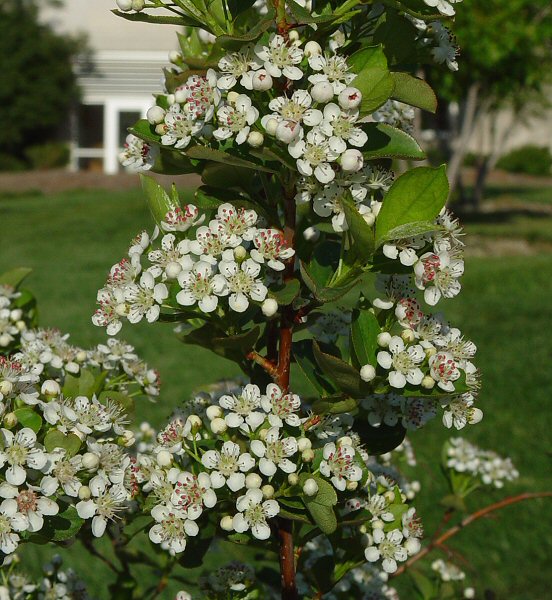Aronia melanocarpa (Michx.) Elliott
Black Chokeberry

Native
CC = 10
CW = 0
MOC = 1
SRank = S1
© DETenaglia
Aronia melanocarpa (Michx.) ElliottBlack Chokeberry | |
 |
Native CC = 10 CW = 0 MOC = 1 SRank = S1 |
© DETenaglia |
|
Family - Rosaceae Habit - Shrubs to 3 m, unarmed. Stems - To 3 m, multiple from base, woody, branching. New growth hairy, green, becoming purplish-brown or grayish-brown with maturity, with inconspicuous lighter lenticels, smooth or somewhat roughened, lacking spines and thorns.
Leaves - Alternate, petiolate, stipulate, rolled during development. Stipules 2.5-3.5 mm long, herbaceous, linear to narrowly oblong, the margins with reddish glandular teeth, shed soon after the leaves develop. Petioles with scattered small peglike glands in the groove on the upper surface. Leaf blades 1.5-9.0 cm long, simple, unlobed, elliptic to broadly elliptic, mostly long-tapered at the tip and base, the margins finely and sharply toothed, the upper surface glabrous but with a line of small peglike reddish purple glands along the midrib (and sometimes also the main lateral veins), the marginal teeth also bearing minute reddish glands, the undersurface glabrous or finely hairy when young.
Inflorescence - Branched clusters at the tips of normal branches, produced as the leaves uncurl, the axis glabrous, the flowers with a small linear bract toward the middle of the stalk, this shed before the flower opens. Flowers - Epigynous, the hypanthium fused to the ovaries, glabrous. Sepals 5, 1.3-1.8 mm long, spreading, triangular, the margins thin and somewhat irregular or glandular, the inner surface densely woolly, persistent at fruiting. Petals 5, 4-7 mm long, broadly obovate to nearly circular, white, occasionally tinged with pink. Stamens 15-20, the anthers yellow. Pistil 1 per flower. Ovary inferior, the tip densely woolly, with 5 locules, each with 1 ovule. Styles 5, fused toward the base, the stigmas more or less capitate.
Fruits - Berrylike pomes, 7-10 mm long, globose, glabrous, purplish black at maturity, with 5 easily exposed seeds embedded in the "core" of inconspicuous papery carpel wall remains and the fleshy portion.
Flowering - April - June. Habitat - Low woods, moist to wet ground, also cultivated. Origin - Native to the U.S. Lookalikes - Species of Prunus. Other info. - This species is widely cultivated throughout Missouri but is found wild in only one southeastern county. It is an easy species to identify because of its showy flower clusters and blackish fruits. The fruits aren't really eaten much by wild animals, hence you will find them on the tree after the leaves have fallen and well into winter. Photographs taken in Columbia, MO., 4-21-04 (DETenaglia); also at Holly Ridge Conservation Area, 4-20-2013 and 8-7-2022 (SRTurner). |